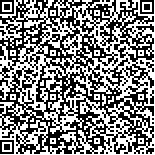| 引用本文: | 刘利萍,沈洪昇,陈冠,袁玲,崔晓雪,张婷,蔡隽,刘洪斌.逍遥散干预交感神经系统TH/ADRA2A轴改善慢性睡眠剥夺小鼠的异常糖代谢[J].中国现代应用药学,2023,40(19):2628-2634. |
| LIU Liping,SHEN Hongsheng,CHEN Guan,YUAN Ling,CUI Xiaoxue,ZHANG Ting,CAI Juan,LIU Hongbin.Xiaoyaosan Intervenes in TH/ADRA2A Axis of Sympathetic Nervous System to Improve Abnormal Glucose Metabolism in Chronic Sleep Deprived Mice[J].Chin J Mod Appl Pharm(中国现代应用药学),2023,40(19):2628-2634. |
|
| |
|
|
| 本文已被:浏览 1596次 下载 861次 |

码上扫一扫! |
|
|
| 逍遥散干预交感神经系统TH/ADRA2A轴改善慢性睡眠剥夺小鼠的异常糖代谢 |
|
刘利萍, 沈洪昇, 陈冠, 袁玲, 崔晓雪, 张婷, 蔡隽, 刘洪斌
|
|
天津市医药科学研究所, 天津 300020
|
|
| 摘要: |
| 目的 从酪氨酸羟化酶/α2肾上腺素能受体(tyrosine hydroxylase/alpha-2a adrenergic receptor,TH/ADRA2A)轴探讨逍遥散改善慢性睡眠剥夺(chronic sleep deprivation,CSD)小鼠糖代谢异常的作用机制。方法 将雄性6周龄C57BL/6小鼠50只随机分为2组:对照组10只,造模组40只。造模组采用多平台水环境法睡眠剥夺4周。每周测量1次空腹血糖值(fasting plasma glucose,FPG)与体质量,连续3周。然后根据FPG随机均分为4组,即模型组,胍乙啶组(30 mg·kg-1·d-1)及逍遥散低、高剂量组(33.88,101.64 g·kg-1·d-1)。此后,继续造模1周。然后给药4周,对照组、模型组灌服等体积纯水,给药期间继续造模。第53天尾静脉采血进行葡萄糖耐受实验;第56天小鼠目内眦取血,ELISA检测血清胰岛素(insulin,INS)、去甲肾上腺素(noradrenaline,NE)、皮质酮(corticosterone,CORT)的表达情况;HE染色观察胰岛的病理改变;免疫荧光染色检测胰腺组织中TH和INS的共表达情况;Real-time PCR和Western blotting检测胰腺中ADRA2A mRNA和蛋白表达水平。结果 在CSD造模过程中,与初始体质量相比,模型组小鼠的体质量在第1周造模结束时明显降低(P<0.05),FPG明显升高(P<0.01)。给药后,与对照组比较,模型组糖耐量明显异常,NE、CORT、INS水平明显升高(P<0.01),胰腺中ADRA2A mRNA和蛋白表达水平显著升高(P<0.01);与模型组比较,逍遥散各组具有更好的葡萄糖耐受性,NE、CORT、INS水平显著降低(P<0.05),胰腺中ADRA2A mRNA和蛋白表达水平明显降低(P<0.05或P<0.01)。HE染色结果显示模型组胰岛中间部位细胞数量较对照组明显减少,各给药组的这种情况均有改善。免疫荧光染色结果显示模型组TH的蛋白含量表达增强,给药后各组TH的蛋白含量表达均减弱。结论 逍遥散可以改善CSD诱导的糖代谢异常,推测其机制可能和降低TH/ADRA2A表达有关。 |
| 关键词: 逍遥散 慢性睡眠剥夺 糖代谢 酪氨酸羟化酶 α2肾上腺素能受体 |
| DOI:10.13748/j.cnki.issn1007-7693.20223404 |
| 分类号:R285.5 |
| 基金项目:天津市卫生健康委员会科技人才培育项目(KJ20087) |
|
| Xiaoyaosan Intervenes in TH/ADRA2A Axis of Sympathetic Nervous System to Improve Abnormal Glucose Metabolism in Chronic Sleep Deprived Mice |
|
LIU Liping, SHEN Hongsheng, CHEN Guan, YUAN Ling, CUI Xiaoxue, ZHANG Ting, CAI Juan, LIU Hongbin
|
|
Tianjin Institute of Medical and Pharmaceutical Sciences, Tianjin 300020, China
|
| Abstract: |
| OBJECTIVE To explore the mechanism of Xiaoyaosan in improving the abnormal glucose metabolism in chronic sleep deprivation(CSD) mice based on tyrosine hydroxylase/alpha-2a adrenergic receptor(TH/ADRA2A) signal pathway. METHODS Fifty six-week-old male C57BL/6 mice were randomly divided into two groups: 10 in the control group and 40 in the model group. The rats in the model group were deprived of sleep for 4 weeks by the method of multi-platform water environment. Fasting plasma glucose(FPG) and body mass were measured once a week for three consecutive weeks. Then, according to FPG, they were randomly divided into four groups, namely model group, guanethidine group(30 mg·kg-1·d-1) and Xiaoyaosan low and high dose groups(33.88, 101.64 g·kg-1·d-1). After grouping, continue modeling for a week. Then the drug was administered for 4 weeks. The control group and model group were treated with pure water of the same volume. Modeling continued during the administration period. On the 53rd day, blood was collected from the tail vein for the glucose tolerance test. On the 56th day, the expression of insulin(INS), noradrenaline(NE) and corticosterone(CORT) in serum was detected by ELISA. HE staining was used to observe the pathological changes of pancreatic islets. Detection of co expression of TH and INS in pancreatic tissues by immunofluorescence staining. Real-time PCR and Western blotting were used to detect the expression of ADRA2A mRNA and protein in the pancreas. RESULTS In the process of CSD modeling, compared with the initial body mass, the body mass of the model group mice decreased significantly at the end of the first week of modeling(P<0.05), and FPG increased significantly(P<0.01). After administration, compared with the control group, the glucose tolerance of the model group was significantly abnormal. The levels of NE, CORT and INS increased significantly(P<0.01), the expression level of ADRA2A mRNA and protein in the pancreas was significantly increased(P<0.01). Compared with the model group, Xiaoyaosan groups had better glucose tolerance, the levels of NE, CORT and INS decreased significantly(P<0.05), and the expression of ADRA2A mRNA and protein in the pancreas decreased significantly(P<0.05 or P<0.01). HE staining results showed that the number of cells in the islets of the model group was significantly reduced compared with the control group, and the situation was improved in all drug groups. The results of immunofluorescence staining showed that the protein content of TH in the model group increased, and the expression of TH in each group decreased after administration. CONCLUSION Xiaoyaosan can improve the abnormal glucose metabolism induced by CSD, and its mechanism may be related to the reduction of TH/ADRA2A expression. |
| Key words: Xiaoyaosan chronic sleep deprivation glucose metabolism tyrosine hydroxylase alpha-2a adrenergic receptor |
|
|
|
|
